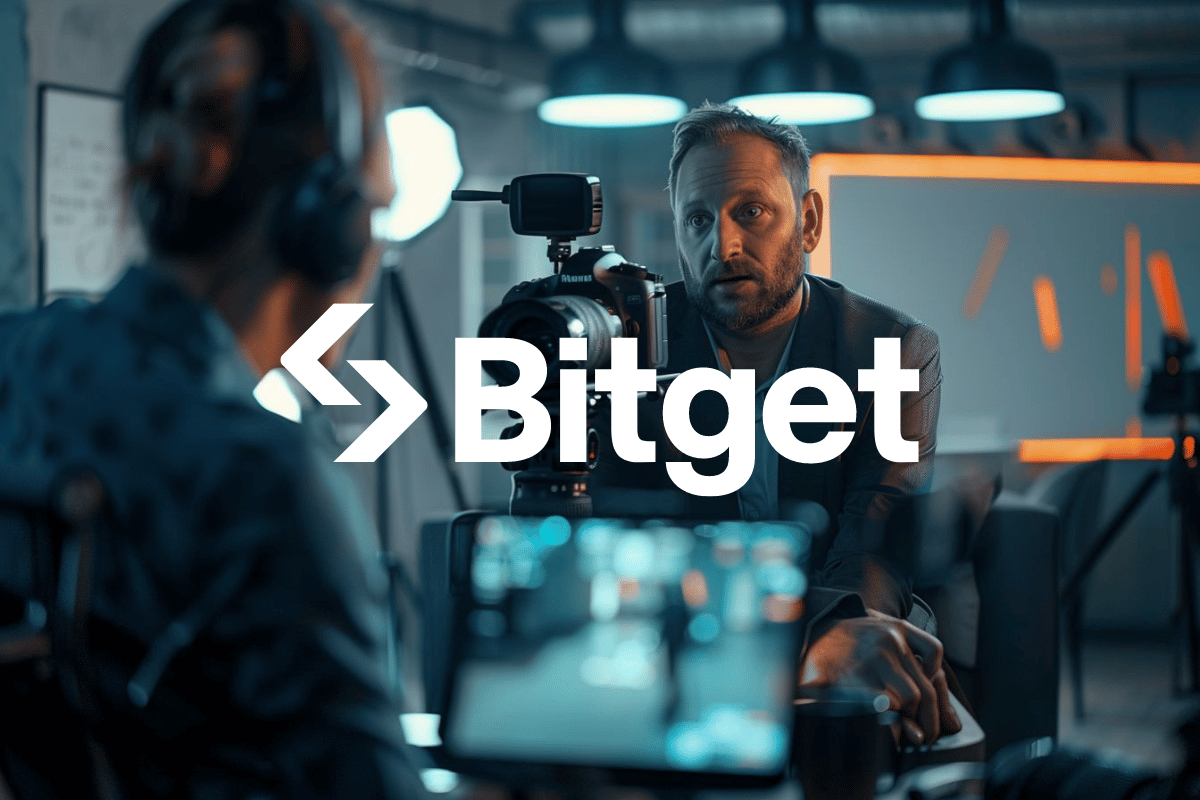In light of the recently launched apprenticeship program in Europe and the $10 million Blockchain4youth fund initiative, we had the opportunity to talk to Vugar Usi Zade, COO of Bitget, the company behind these projects. We invite you to read.
Can you tell us more about your newly launched internship program in Europe? What are the main goals of this program?
The COO Apprenticeship Program will initially be available in Europe and offers a three-month paid internship, with the top three participants receiving an exclusive, fully-funded mentoring opportunity in Dubai under my supervision.
Primary responsibilities include working closely with Bitget's executive team to gain valuable leadership experience, conducting market research to deepen understanding of the cryptocurrency landscape, and helping implement go-to-market strategies.
The main goal is always to make it easier for the younger generation to access Web3 education. This program offers young graduates the chance to learn from industry experts, gain hands-on experience, and prepare them to make a significant impact in the cryptocurrency industry. With a program like this, we want to help Web3 enthusiasts make their mark on the digital finance revolution.
How will Blockchain4youth's $10 million fund be used to support youth cryptocurrency education?
The o fund is used to implement various initiatives under the Blockchain4youth program. This includes blockchain fundamentals courses available online, partnerships with several universities around the world to offer on-campus lectures, hosting hackathons and offline events, as well as scholarships.
What challenges and opportunities do you see in cryptocurrency education for today's youth?
In terms of opportunities, the development of cryptocurrencies is still in its early stages, much like the internet industry pre-2010 or even earlier. There remains significant room for development and immature mechanisms that require repair and refinement. Young people starting to learn about cryptocurrencies at this stage can still benefit from the growth of the industry through rapid learning and accumulation.
But there are still some challenges to overcome. These include the discrepancy between theory and practice caused by the specificity of the industry. Cryptocurrencies, whether for trading or DeFi, require hands-on experience for deeper understanding. Relying solely on articles, knowledge or videos from books or the Internet will not be enough for students to fully understand the industry.
The rapid pace of industry development constantly introduces new concepts that require a spirit of long-term learning. The cryptocurrency industry can see new innovations appear every month, week, or even day. Only students with a high level of curiosity and initiative can successfully keep up with the pace of industry development.
What is your vision for the mass adoption of cryptocurrencies and how can education contribute to achieving this goal?
My vision for mass adoption of cryptocurrencies includes several key stages, with education playing a key role. It dispels misconceptions and increases awareness of the benefits of cryptocurrencies. Additionally, knowledge about this asset class enables people to take control of their finances. Cryptocurrencies have the potential to provide financial access to people who are underserved or excluded by traditional banking systems. Education can help fill this gap by teaching people how to use cryptocurrencies and access financial services in a decentralized way.
Overall, education plays a key role in increasing the acceptance and use of cryptocurrencies. By investing in education and promoting widespread awareness and knowledge about cryptocurrencies, we can create a more open and decentralized financial system in the future.
Can you share examples of specific educational initiatives or projects that have already been implemented within your program?
Last year we organized Crypto Experience Day. On August 12, educational campaigns were held with universities in 10 different countries. The program included keynote speeches, quizzes and practical exercises. Participants were also given specific experiences, such as setting up a wallet or creating an NFT.
Another notable event was our first Hackathon. In cooperation with Foresight Ventures and the largest online coding platform HackerEarth, participants had the opportunity to fully demonstrate their creative abilities and implement next-generation ideas.
What steps does your organization take to ensure that educational programs are accessible to diverse populations?
From the very beginning, our goal has been to provide insightful information and make cryptocurrency accessible to everyone. We have the Bitget Academy which provides daily market news and analysis, as well as tutorials for beginners. The Bitget Insights platform is a social hub where experts share their tips with the trading community. It was natural that we began to scale educational initiatives within a much larger project: Blockchain4youth.
Blockchain4youth aims to create the future of blockchain by enabling and inspiring younger generations to use Web3 and cryptocurrency tools to create and engage in the decentralized space. It includes online courses on blockchain, as well as a lecture series at several universities around the world. This program organizes events that aim to further equip young minds with deep knowledge about cryptocurrencies.
Blockchain4Youth aims to become a powerful promoter of role models. The platform will also collaborate with other leading blockchain companies to incubate innovative projects of young entrepreneurs and organize U30 (under 30) hackathons to identify the most promising ones.
Now we have started the Bitget COO apprenticeship program, which is part of Blockchain4youth. This program aims to empower and nurture a future cadre of cryptocurrency pioneers. Our goal is to attract more people to Web3.
Do you plan to develop any educational partnerships or collaborations with academic institutions? What benefits will it bring to young people interested in blockchain technology?
We cooperate with universities around the world, offering lectures on campuses. We started with National Taiwan University and now offer courses at several campuses, such as the School of Blockchain Management in Italy and UTN University in Argentina, and plan to further expand such collaborations.
These educational initiatives are essential to ensure complete knowledge of the Web3 sector, especially for beginners. Incorporating such programs in traditional universities will also help increase the overall adoption of blockchain technology and understand its true potential. It is worth noting that Web3 is still relatively young, but it is one of the sectors with the greatest growth potential. Having knowledge in this industry brings tangible benefits in your future career.

How do you measure the success of your educational initiatives? Are there any preliminary results or comments you can share with us?
The impact of education itself is more tangible in the long term, but there is already real interest in this initiative on the part of younger generations. A recent study we conducted this year found that Generations Y and Z are more open to blockchain and cryptocurrencies. The Blockchain4Youth project aims to reach this audience in order to create a future based on blockchain. Our first hackathon attracted over 1,200 participants and over 60 high-quality proposals. We also positively assessed every course and conference organized at universities, which proves real openness and willingness to learn about the topic.
Are there any new technologies or innovations in cryptocurrency that you think will be key to the future of financial education?
Crypto has two innovative concepts that I believe can be incorporated into future financial education: DeFi and smart contracts.
DeFi platforms provide financial services such as lending, trading, and mining without the need for intermediaries. Teaching DeFi protocols and their safe use enables direct access to financial services, lowering barriers to entry. Financial education courses may cover topics such as decentralized exchanges (DEX), liquidity pools, profit optimization strategies, and risk management in DeFi.
Smart contracts are self-executing contracts whose terms are written directly into the code. They automatically execute protocols and transactions, reducing the need for intermediaries and increasing efficiency. Teaching students the concepts of smart contracts and programmable currencies can help them understand how cryptocurrencies enable programmable financial transactions, including automated payments, custodial services, and decentralized autonomous organizations (DAOs).
Finally, is there anything you would like to add or highlight regarding the future of cryptocurrencies and education?
The future of cryptocurrencies and education will likely be linked in several ways:
- Financial literacy: As cryptocurrencies become more common, there is a growing need for education on how they work, their benefits, risks, and how to use them safely. Educational institutions can start offering courses or workshops on blockchain technology, cryptocurrencies and related topics to increase financial literacy among students and the general public.
- Blockchain technology in education: Blockchain technology has the potential to revolutionize the education sector by improving record keeping, ensuring the security and integrity of academic credentials, and enabling new models of certification and credentialing. This could lead to more transparent and verifiable qualifications, making it easier for employers to confirm job applicants' skills and knowledge.
- Research and innovation: Universities and research institutions are already exploring blockchain technology for a variety of applications, including academic research, intellectual property management and supply chain transparency. As technology evolves, we can expect to see more collaboration between the cryptocurrency industry and educational institutions to drive innovation in both sectors.
- Tokenized educational resources: Tokenization allows for partial ownership of resources, and this concept can extend to educational resources such as textbooks, courses, and even shares in educational institutions. This could democratize access to education and investment opportunities in the education sector.
- Payments and financing: Cryptocurrencies can streamline international payments for students, especially those studying abroad, by reducing transaction costs and processing times. Additionally, blockchain-based crowdfunding platforms may prove to be a new way to finance educational projects, scholarships or research initiatives.
Overall, cryptocurrencies and blockchain technology have the potential to innovate various aspects of the education sector, from financial literacy to record-keeping and financing mechanisms. However, challenges such as regulatory frameworks, security concerns and technological barriers need to be addressed to ensure widespread adoption and integration into education systems.

